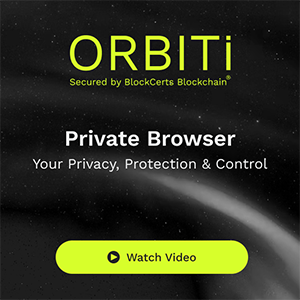What Tesla and BlockCerts Have in Common...
Tim Vasko

It's officially time to say we did it. Block Certs has achieved Web 4.0. I'm now able to say the next internet based on blockchain has been created. This is the first time since the release of the internet in 1994 to the public, that a fully rewired, authenticated model that rips data apart and software is put into the hands of users for their control, that's been delivered.
The similarities between this internet transition are very much like what Tesla achieved with the first viable electric cars— challenging the very powerful and entrenched assumptions of the fossil fuel vehicle market and the incumbent companies. They weren't the first to the electric car game, but Tesla’s iterations brought the category for individual auto transportation against the odds.
Electric Cars
Let's compare Blockcerts Blockchain to this history. In 2008, the first Tesla roadster hit the market. It went on a single charge, about 245 miles. This was a significant first improvement, demonstrating that it was possible. Five years prior in 2003, the company was founded and a year later, Elon Musk join the company in with an investment of 30 million, when he became chairman.
Tesla wasn't the first electric car. The original Tesla founders were engineers that based their company on a 1996 General Motor’s study. They built upon the GM proof of concept. Also, in the mid-1990s, along with GM, Toyota began the Prius. And Honda was the first to build the electric car, the EV Plus, that did not use lead acid batteries.
Iterations of cars are like iterations of the web and cloud. When forming Block Certs in 2016, I had been building, delivering, and looking at a lot of technology and business factors that affected many sectors of industry, from oil to finance, healthcare to real estate and consumer products. I had been doing this in technology for many years.
The Beginnings
This gave me the insight to write a patent years earlier in 2010, and to consider how blockchain would change everything business and consumer technology was based on.
Starting in 2013, when Bitcoin began to come out of the shadows, I had a pretty good model, working in Boston at MIT. In 2016, just a little less than a year after Ethereum hit the open source market, BlockCerts was born. By 2018. we launched our proof of concept blockchain, put together our original private placement of B Cert tokens right after the first crypto winner.
The going was slow for capital and for development at first. It's been a long haul. Our machine that creates the decentralized internet is now on the road and like the first Tesla, breaks a lot of barriers.
The Fallout of Fake Authentication
Now, we've hit the “fully operational” point to hit our stride. The crypto market has imploded with FTX, with centralized exchanges crashing in the wake of the crypto fallout. That's not the only thing we're seeing with technology.
Facebook just cut 11,000 jobs. Salesforce quietly cut around a thousand. Twitter's a mess. Advertisers are pulling out and it may end up in bankruptcy. Elon is struggling to find cash flow models, is the guise of “authentication” to try and attract cash. The abuse of that authentication with no technology behind it, was used to try and get $8 a month from users.
The market quickly started faking authenticated posts from advertisers and brands that are pulling out. Eli Lilly was one of the toughest hit with a 4.3% drop in their stock, when a fake post said insulin was free from their “authenticated” account.
What we've created at BlockCerts took a long time, but our timing couldn't be more perfect. The mistrust of centralized leadership is making enterprises pull away ad budgets immediately. Companies like GM, Volkswagen, Audi, Pfizer, Chipotle, and Coke, are taking Twitter down to less revenues than it started with.
The Future is BlockCerts
What BlockCerts has been building is beyond Web 2.0, centralized software, and cloud; beyond crypto’s Web 3.0 is process and effect in action. Wall Street has long said, the market is driven by just two emotions- fear, and greed. In academic studies, this is known as behavioral finance, and this irrational decision-making that's been happening is exactly the challenge these companies are facing.
Twitter, Meta and others’ economics are historically predictable in down markets where safe havens are sought as defensive strategies. This is where BlockCerts’ model is gaining traction right now. Examples of safe havens have always been utilities. No matter the state of the market, people use electricity, gas power, and today- digital. Digital is no longer a “nice to have”. It's a staple utility and essential to life in 2022.
This is BlockCerts’ foundational model. The fact that big centralized companies are struggling, drives both enterprises, small businesses and consumers to look for more control over their future. All of that ties in perfectly with the idea that cloud services can now be moderated by users as a utility that enables people to store value by holding their own software and data through BCert tokens.
Internet consumers needed a browser, so BlockCerts on the 4th of July successfully launch the ORBITi browser. That's a staple that can assure that the net can be reached without the tracking of other browsers like Chrome, Safari, Edge, driving privacy to store their critical assets through private keys.
As Tesla has become more mainstream throughout the years, so will BlockCerts. Blockchain use cases are becoming more critical and we’ve been talking about it for years. The shift is vital, bringing power and authentication back to the people.
Want to begin? Download the ORBITi browser here.
To enable comments sign up for a Disqus account and enter your Disqus shortname in the Articulate node settings.






